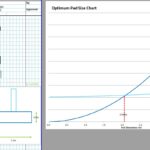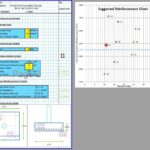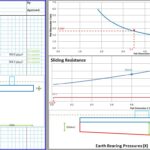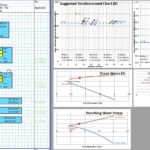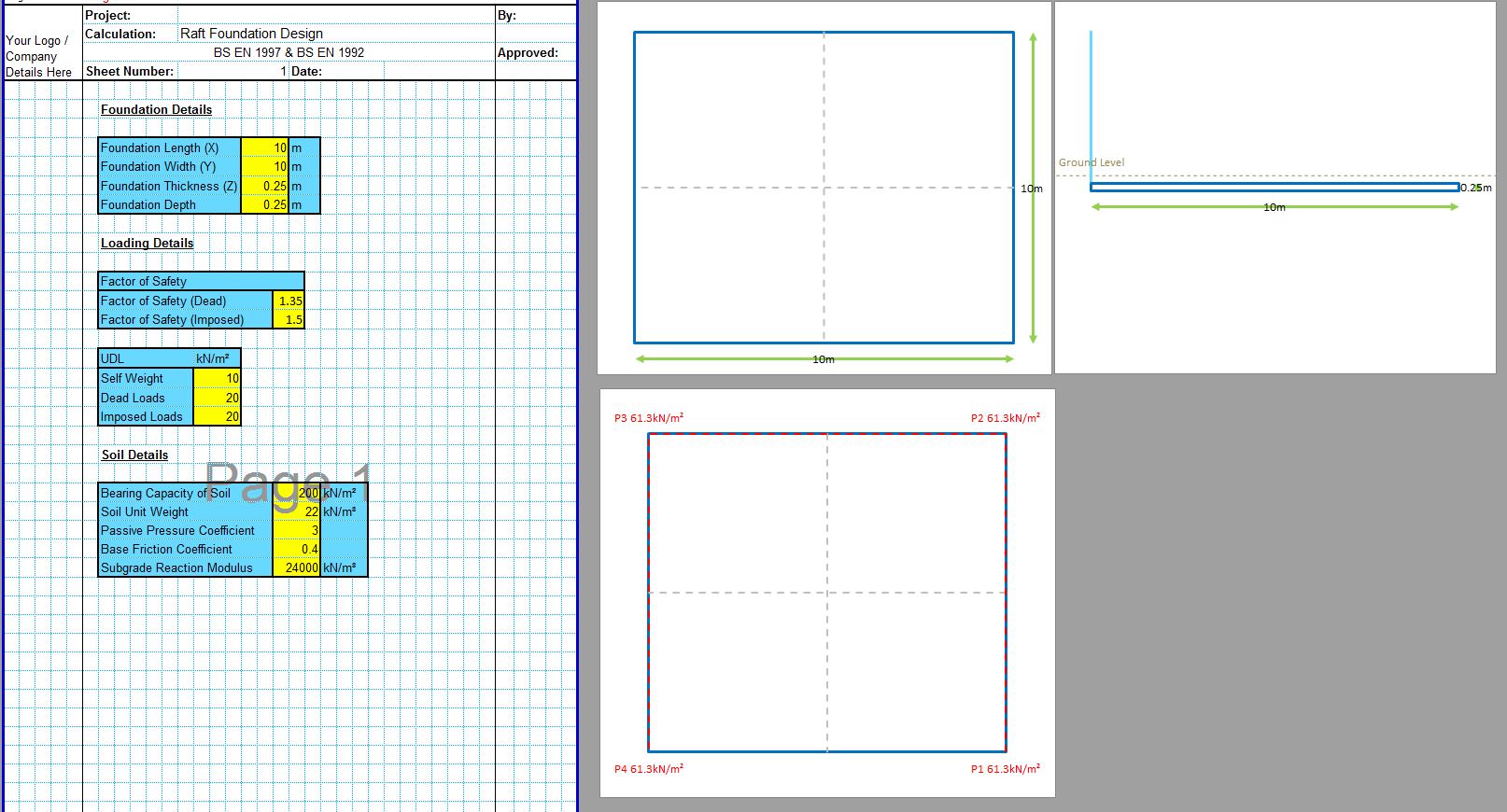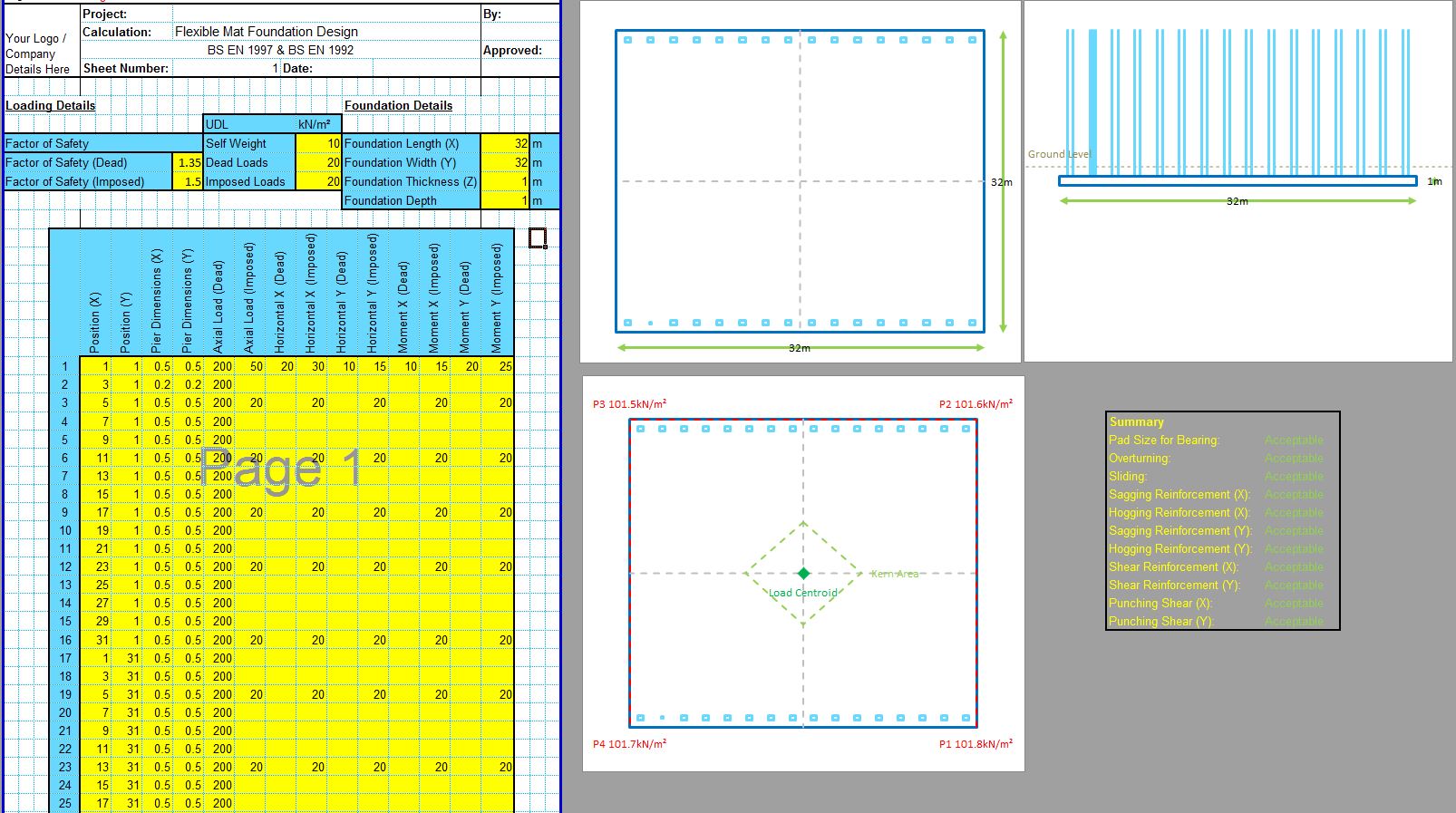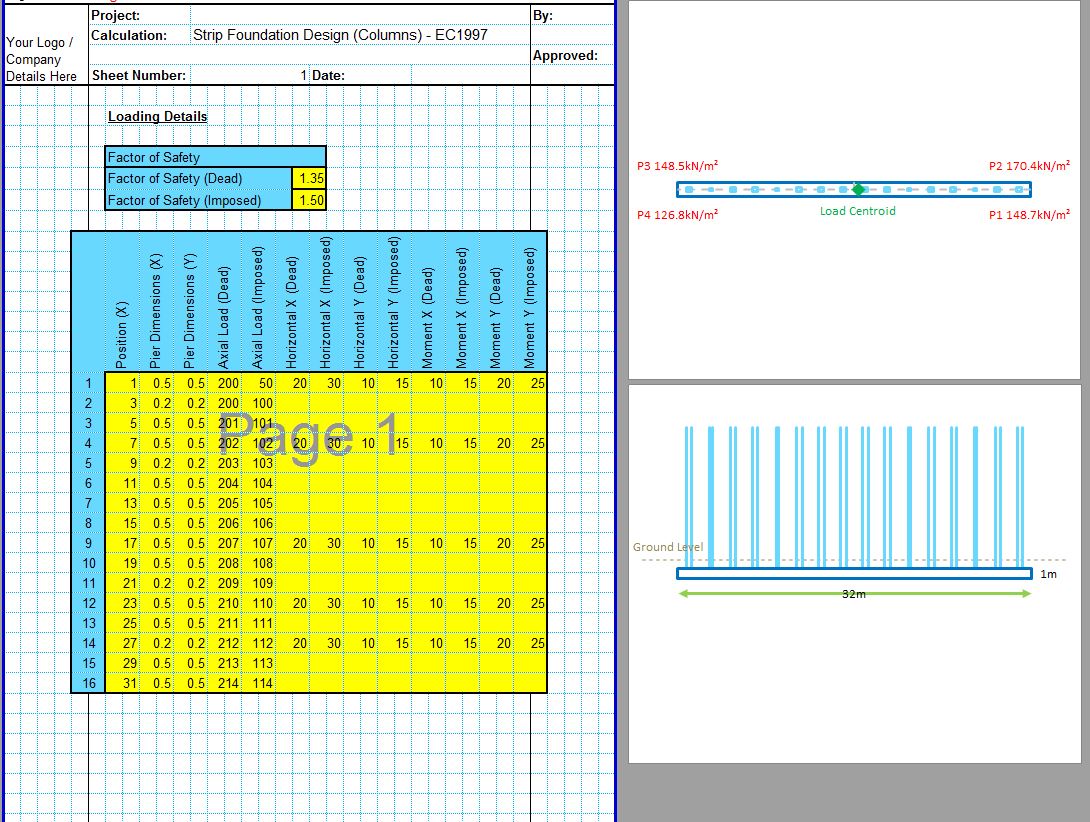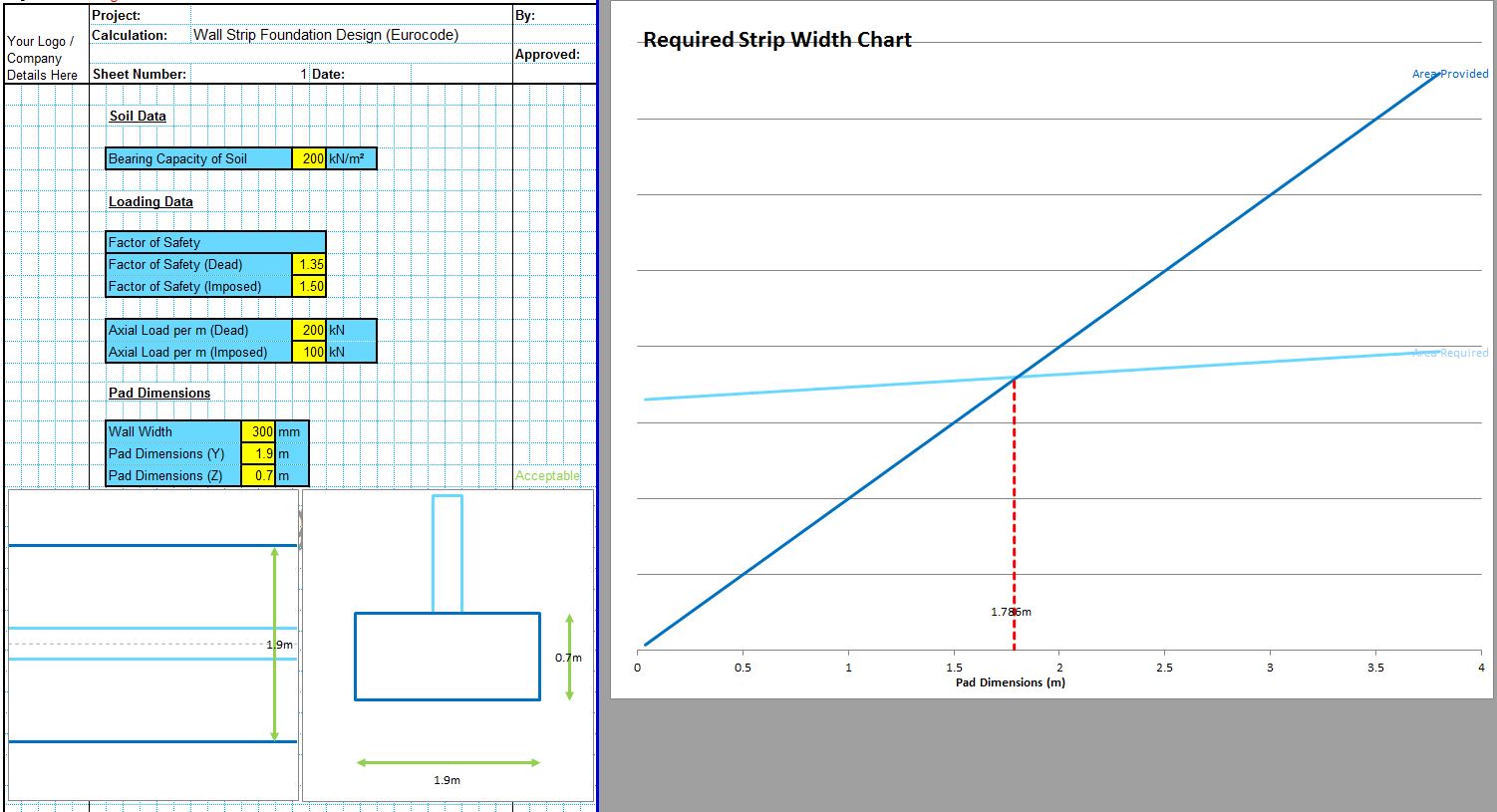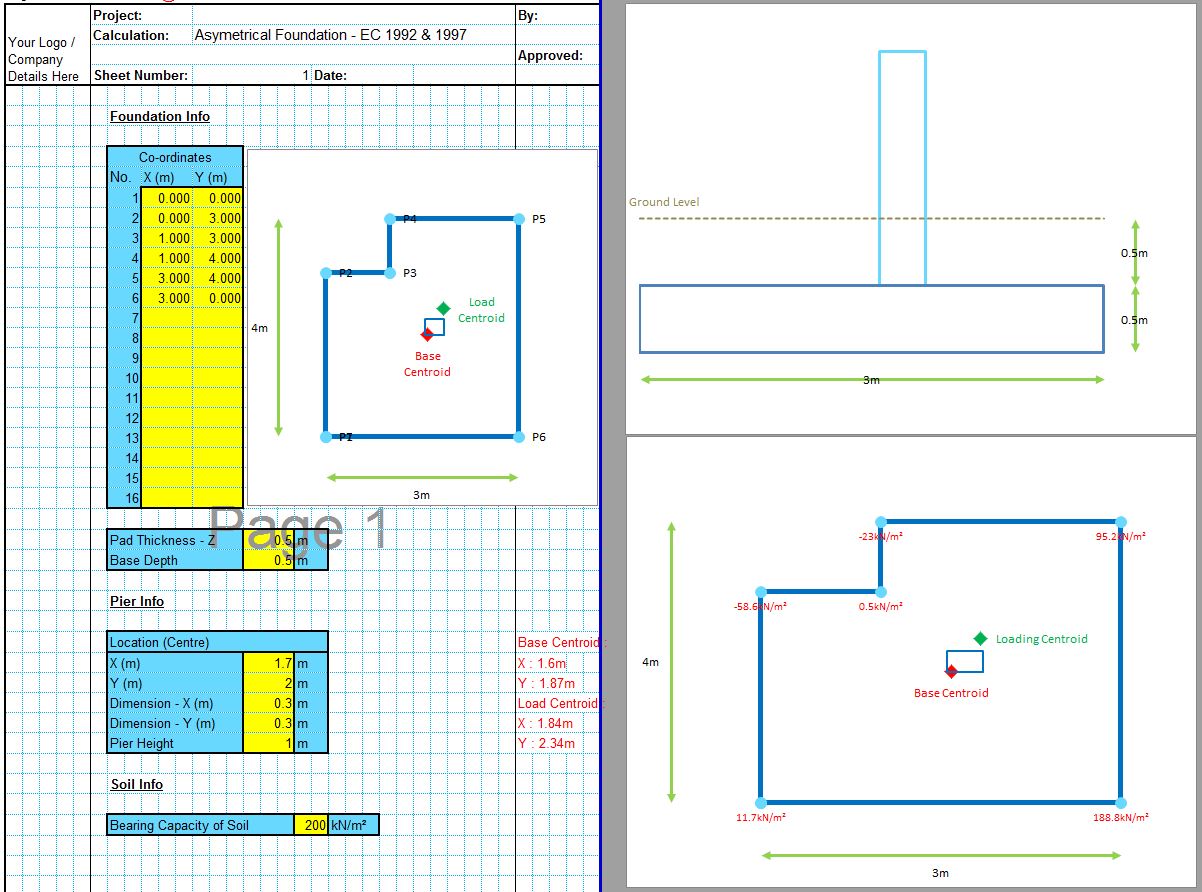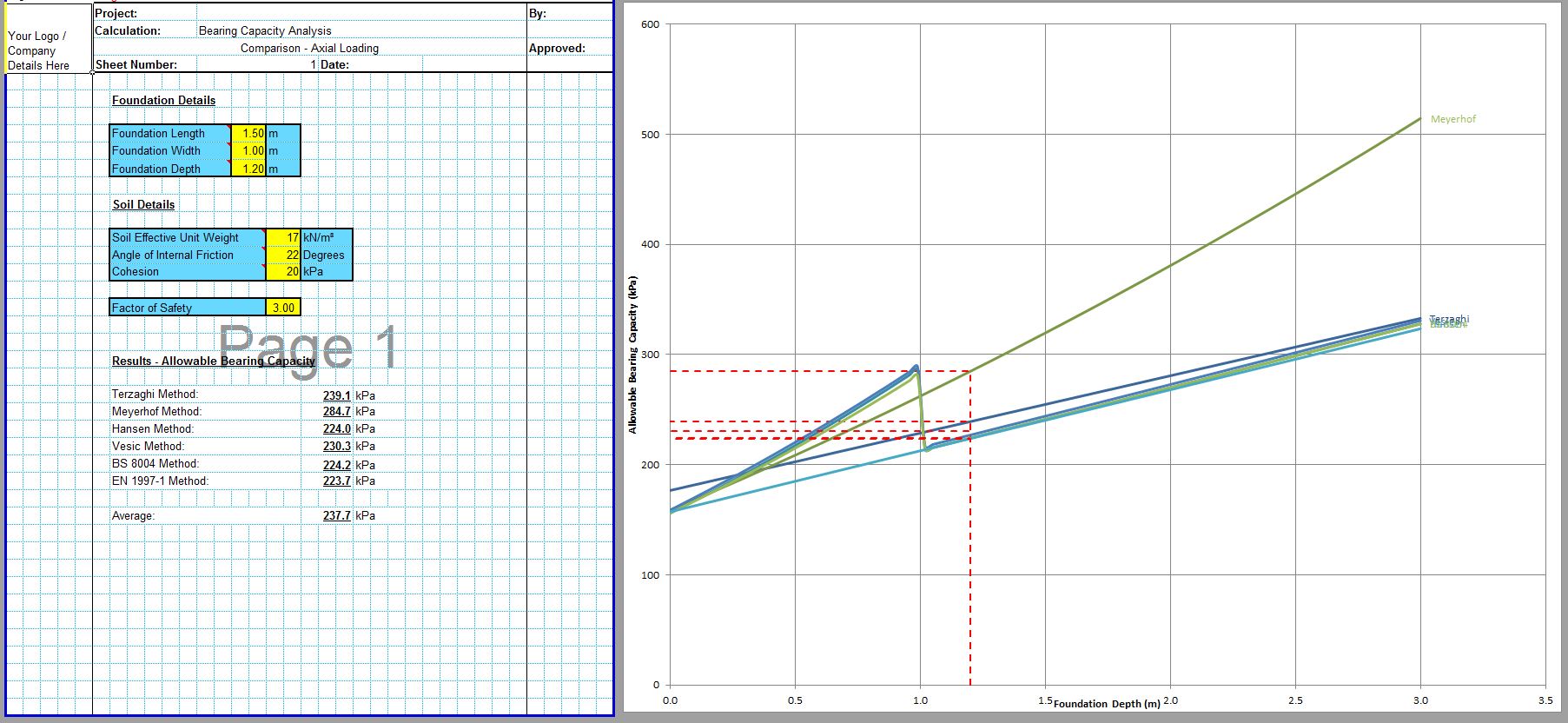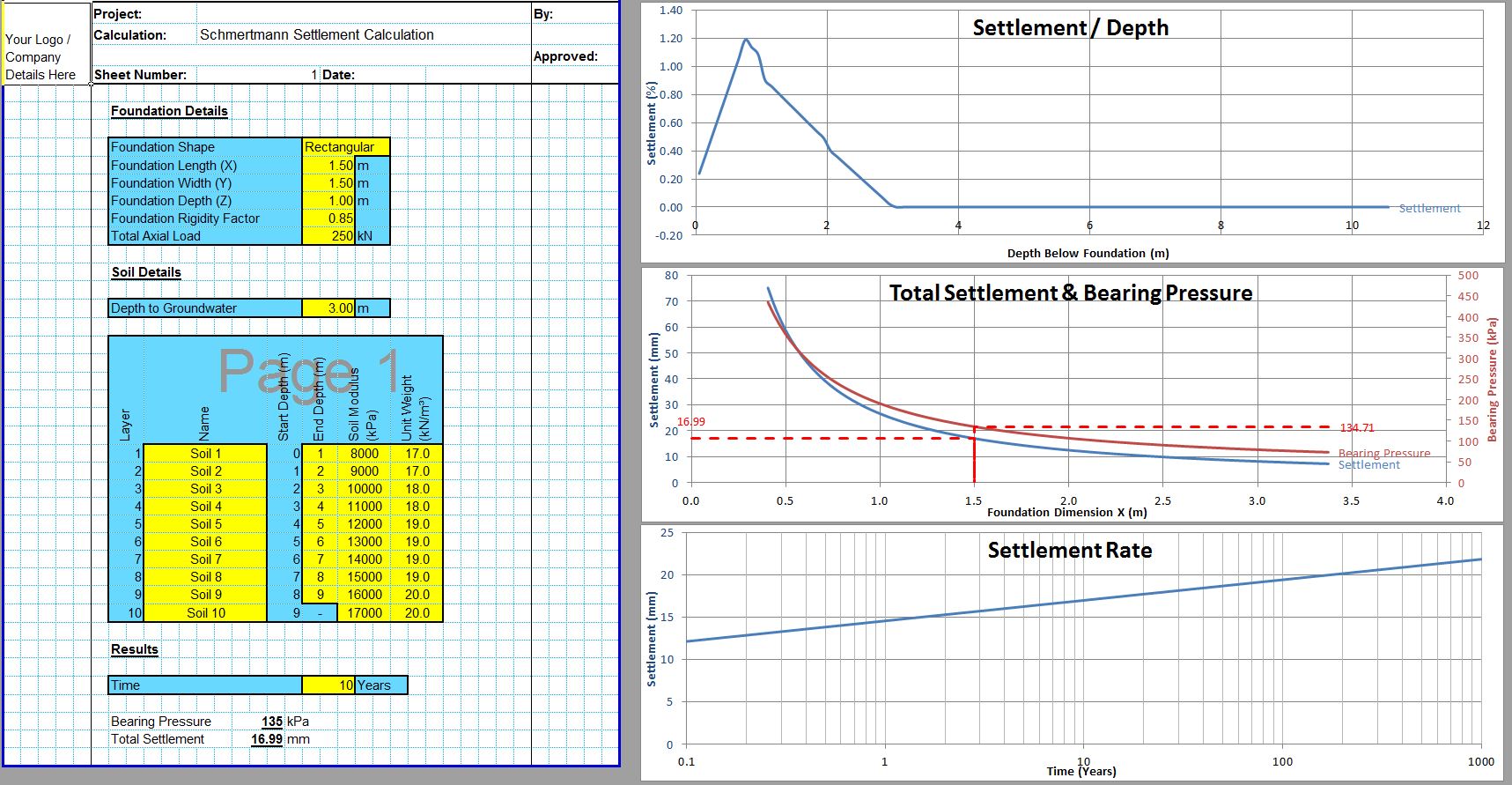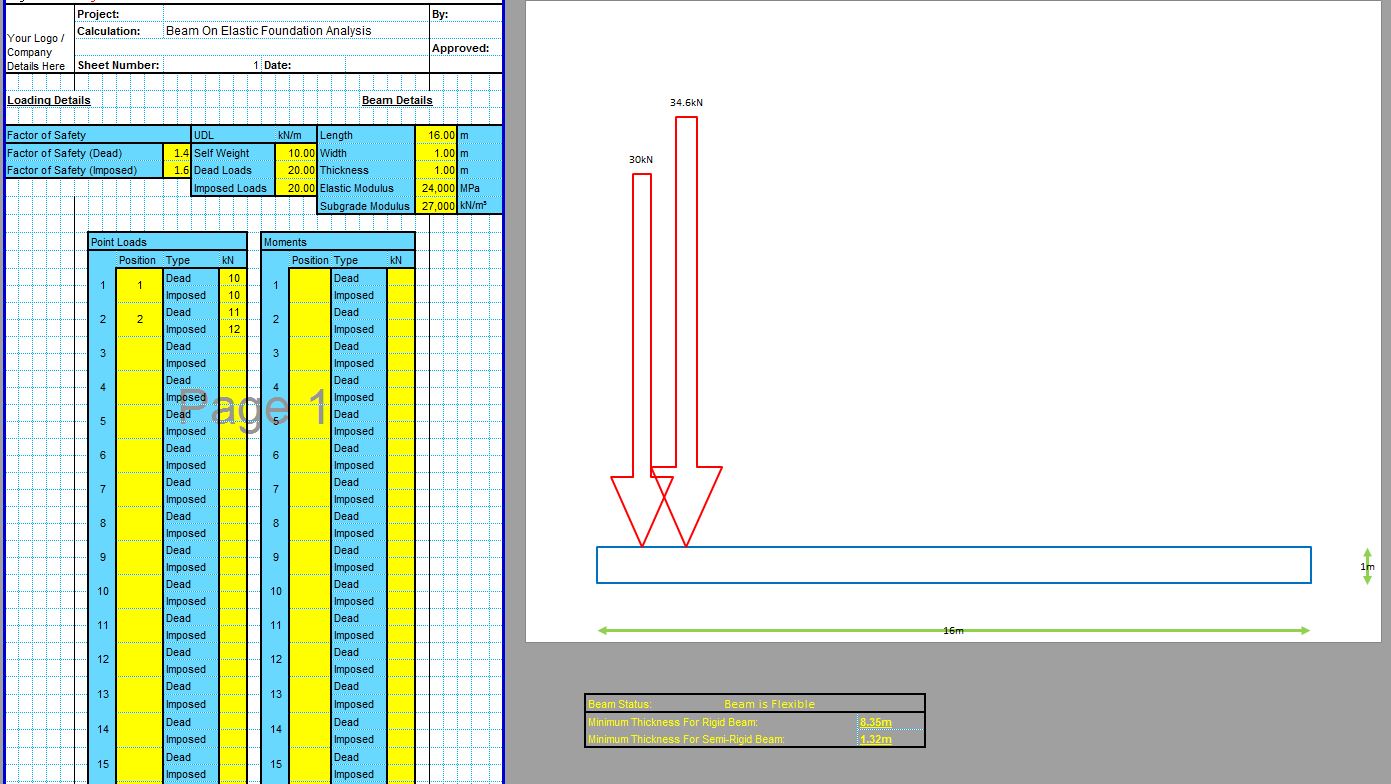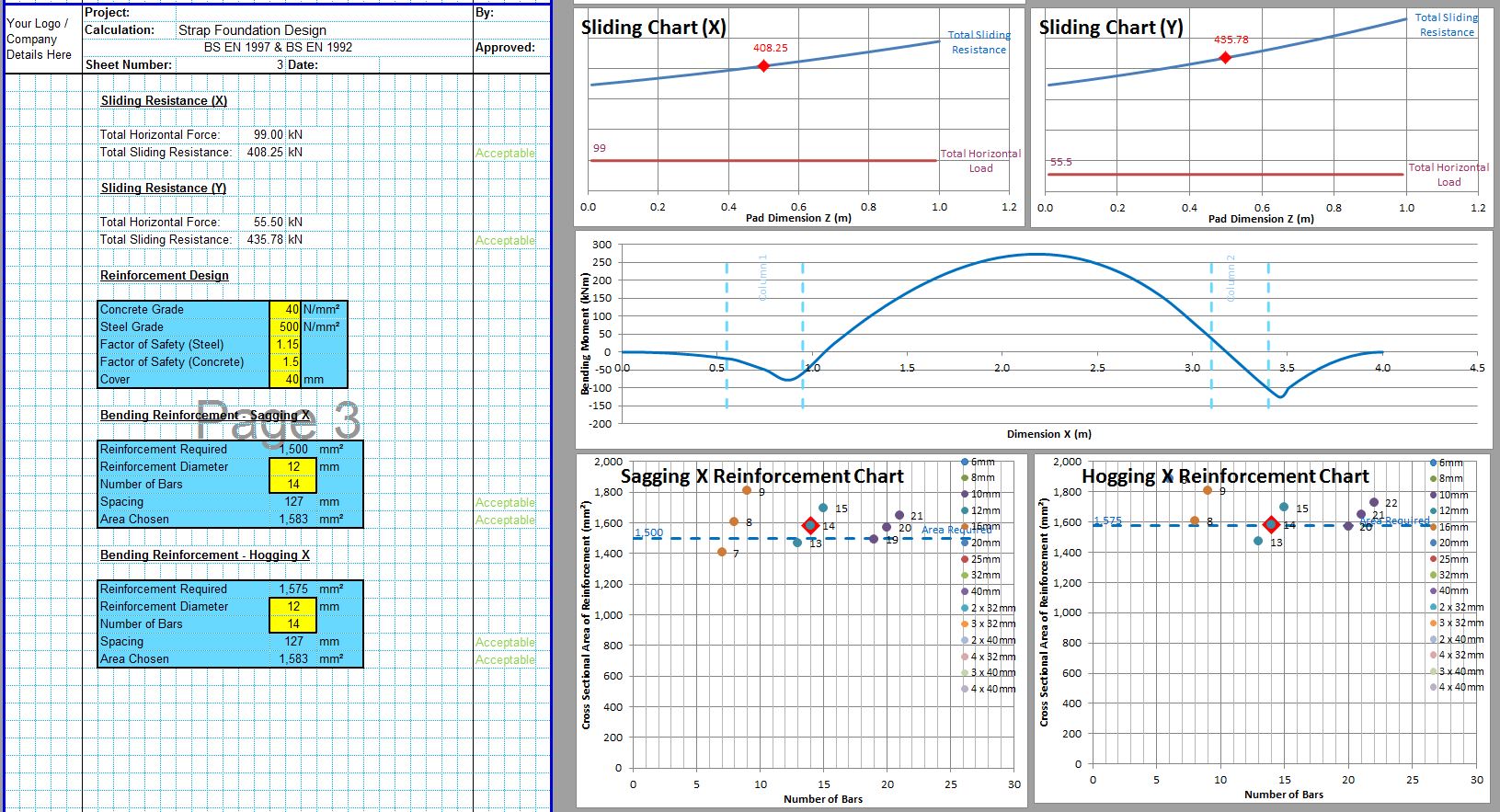The CivilWeb Pad Footing Design Spreadsheet is an easy to use design spreadsheet which can be used to design single pad foundations. The spreadsheet completes all the calculations required to complete a single pad foundation design in accordance with either BS EN 1997 and BS EN 1992 or BS 8004 and BS 8110.
The CivilWeb Pad Footing Design Spreadsheet includes unique design analysis tools which the designer can use to optimise the design of the foundation. This includes a graph showing the designer the optimum size of the foundations and tools to show the designer to most cost effective reinforcement design. The unique design tools enable the designer to complete a complex pad foundation design in minutes. The spreadsheet also includes a simplified version which can be used to complete simple designs even more quickly.
The CivilWeb Pad Foundation Design Spreadsheet can be purchased at the bottom of this page for only £20. Note that this spreadsheet cannot be used to design eccentric foundations or asymmetrical foundations. The CivilWeb Eccentric Footing Design Excel Sheet can be used for these designs. Why not purchase our Single Pad Design Bundle including our pad and eccentric foundation design spreadsheets for only £25.
Alternatively, our best value bundle, the full Foundation Design Suite including all 12 of our foundation design spreadsheets can be purchased at the bottom of this page for just £50 (80% discount).
Pad Foundations
Single pad foundations are usually small pads of reinforced concrete which take the load from a single column or load point. This takes a large concentrated column load and spreads it over a much larger area so that it can be accommodated by the underlying soils. This is why small shallow foundations are sometimes called spread foundations.
Single pad foundations are very common for all types of steel and timber frame buildings. Most warehouses, large sheds and general purpose industrial and agricultural buildings will include single pad foundations. They can be used in all common soil types and on rock. When the columns are closely spaced single pad foundations can become combined foundations. For very soft soils the single foundations can become large and overlap. In these cases a mat foundation will be economical.
Single Pad Foundation Design
The design of single pad foundations is fairly straightforward. Firstly the designer must ensure that the pad foundation is sufficiently large to spread the load from the column. In very simple symmetrical foundation designs with only axial loads, the bearing pressure beneath the foundation is simply the load from the column plus the weight of the foundation divided by the plan area of the foundation. In these cases the foundation can be easily designed by hand.
When the foundation needs to accommodate moments as well as axial forces, the bearing pressure beneath the foundation will vary. In these cases calculating the maximum bearing pressure is more complicated and time consuming. In some cases the bearing pressure can even become negative indicating a tensile force acting on the soil. In most cases this should be avoided with a larger foundation, even when the maximum bearing pressure does not exceed the soils bearing capacity.
In cases where the column is not placed centrally on the column are more complex. This can occur when there is not sufficient space in one direction, for example when a column is close to the site boundary. Eccentric foundations can be designed using our CivilWeb Eccentric Footing Design Excel Sheet.
After the dimensions of the foundation have been determined, then the reinforcement can be designed. The maximum moments and shear forces acting on the foundation need to be determined which can be a time consuming process to complete by hand, particularly where moments are present. The CivilWeb Pad Footing Design Spreadsheet completes these calculations instantly. The maximum moments and shear forces are then used to design the reinforcement in a similar way as any reinforced concrete design. The CivilWeb Pad Foundation Design Spreadsheet can complete this in accordance with either BS EN 1992 or BS 8110.
Pad Footing Design Spreadsheet - Inputs
Firstly the designer must input the loading information and the proposed geometry of the pad foundation. Usually the loadings are determined by the superstructure design and cannot be altered by the foundation designer. The designer can input axial, horizontal and moment loads acting on the foundation.
The designer must choose a proposed geometry design for the pad foundation. The initial proposed size can be taken from experience or can simply be a guess. The spreadsheet includes a dynamic drawing of the proposed foundation so that the designer can see exactly which dimensions are which, removing any risk of confusion.
The designer can then enter the soil properties into the spreadsheet. The CivilWeb Pad Footing Design Spreadsheet uses a simple maximum allowable bearing capacity for the soil in order to analyse the proposed foundation. For preliminary design typical values can be used. For final design however this value is critical so should be checked with onsite or laboratory testing to ensure a suitable value is used. A simple spreadsheet such as the CivilWeb Soil Bearing Capacity Calculation Suite can be used for this analysis.
Note that while in most cases a simple bearing capacity will be suitable, in some situations a separate settlement analysis may also be prudent. In clay soils consolidation settlement can continue for many years so an analysis may be required for any structures which are sensitive to settlement. A simple spreadsheet such as the CivilWeb Foundation Settlement Calculator Spreadsheet can be used for this.
The CivilWeb Pad Foundation Design Excel Spreadsheet will then analyse the proposed foundation size and calculate whether this is valid or not. This is done either in accordance with BS EN 1997 or BS 8004. The spreadsheet then presents the designer with unique analysis graphs which show the designer exactly where the pad foundation can be optimised. For any set of loading conditions the spreadsheet instantly shows the designer the optimum pad foundation size. This removes any need for a time consuming, iterative approach.
After the pad foundation geometry is finalised, next the designer must input the reinforcement details. The CivilWeb Pad Foundation Design Excel Spreadsheet calculates the amount of reinforcement which is necessary and then uses our unique reinforcement picker tool to show the designer which reinforcement and spacing arrangements are most suitable. This can be done in accordance with either BS EN 1992 or BS 8110.
The CivilWeb Pad Footing Design Spreadsheet then summarises the design, flagging up any areas where the design is not valid. Then the spreadsheet draws a reinforcement detail drawing for the designer which can be passed on to the constructors.
CivilWeb Pad Footing Design Spreadsheet
The CivilWeb Pad Footing Design Spreadsheet will save a designer many hours of work on every pad foundation design. The spreadsheet completes all the required calculations instantly and is fully compliant with either BS EN 1997 or BS 8004. The spreadsheet also includes unique design and analysis tools which allow the designer to optimise their pad foundation design at a glance. Even compared to other software programs this will save the designer time on iterative design approaches.
The CivilWeb Pad Footing Design Spreadsheet can be purchased here for only £20.
Purchase our Single Pad Design Suite including both single pad and eccentric pad foundation design spreadsheets for only £25.
Or buy our best value bundle, the full Foundation Design Suite including all 12 of our foundation design spreadsheets at a discount of 80%.
Download Free Trial Version
To try out a fully functional free trail version of this software, please enter your email address below to sign up to our newsletter.
Other Foundation Design Spreadsheets;
Foundation Design Spreadsheet Suite
Our full Foundation Design Suite includes all 12 of our foundation design spreadsheets for only £50 (80% discount).

